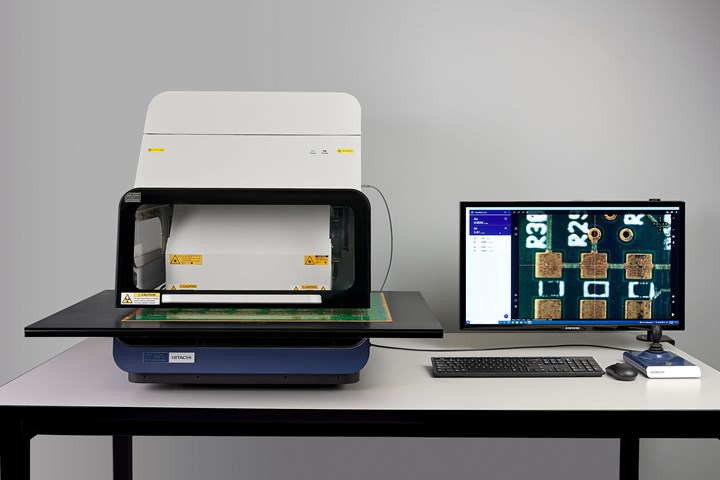Hitachi Introduces New Plating, Coating Analysis Tool
Hitachi’s FT230 reportedly speeds up analysis and reduces costly errors to help electronics and component-level manufacturers, general metal finishers and plating-on-plastic facilities achieve 100% inspection and meet tightening specifications.
Hitachi High-Tech Analytical Science (Westford, Massachusetts) has expanded its plating and coatings analysis range with the launch of the FT230. The new FT230 is designed to enable quality control to keep pace with production by significantly simplifying and accelerating testing of components and assemblies. Removing the traditional hurdles of X-ray fluorescence (XRF) analysis, the FT230 reportedly speeds up analysis and reduces costly errors to help electronics and component-level manufacturers, general metal finishers and plating-on-plastic facilities achieve 100% inspection and meet tightening specifications.
The user experience of the FT230 is said to be significantly improved by the Find My Part feature that automatically selects the features that need to be measured, the analytical routines and reporting rules so the operator spends less time using the XRF and more time working the results. The on-board, user-built library is easily expanded to handle new parts and new routines as your work changes.
The FT230 is the first product to run Hitachi’s all new FT Connect software, which focuses the interface on the most important aspects of the XRF. It is said to be dominated by the largest sample view in the industry and clear results presentation, making it easier to position parts for analysis and see the results. Results are prominently displayed in the main measurement screen so operators can take action quickly, and stored on-board for later reviews. The results can be exported in spreadsheet or comprehensive JSON format for integration with SCADA, QMS, MES or ERP systems. Customized reports can similarly be created for internal or external customers.
In addition to a series of functions to confirm instrument stability (including routine instrument checks and calibration validation tools), the on-board diagnostics give users further information about the health of the instrument. This data can be shared directly with Hitachi’s technical support team over ExTOPE Connect (Hitachi’s cloud-based advanced data management and storage service that enables users to share data instantly and securely).
The FT230 is said to add value beyond measuring plating and coating thickness and composition. The powerful software and high-resolution solid-state drive (SDD) make it possible to screen parts for conformity to restricted materials legislations such as RoHS (Restriction of Hazardous Substances) and analyze the composition of materials including plating bath solutions and metal alloys. The company says this is useful for validating incoming substrates and confirming chemistry, which is crucial for hallmarking centers handling precious metals.
Related Content
-
Titrations: To Automate or Not to Automate?
What considerations should you keep in mind for automatic titrations? Conor McAnespie of Hanna Instruments discusses the benefits of auto titrators.
-
NASF/AESF Foundation Research Project #121: Development of a Sustainability Metrics System and a Technical Solution Method for Sustainable Metal Finishing - 15th Quarterly Report
This NASF-AESF Foundation research project report covers the twelfth quarter of project work (October-December 2023) at Wayne State University in Detroit. In this period, our main effort focused on the development of a set of Digital Twins (DTs) using the Physics-Informed Neural Network (PINN) technology with application on parts rinsing simulation.
-
Shedding Light on Surface Inspection
State-of-the-art reflector-based lighting system improves luminosity and ergonomics for surface inspection tasks while reducing energy usage.

















